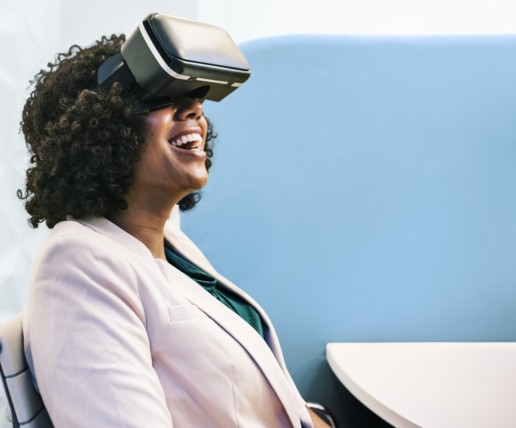Employers should ‘double down’ on tech and benefits data analytics. Most still aren’t
Did you know: 53 percent of benefits leaders say the biggest challenge they face regarding effective benefits programs is gaining access to their data. Read this blog to learn why employers should 'double down' on technology.
Utilizing data to understand which health benefits will best work for employees is key to staying ahead of the curve, but just 18% of benefits managers believe their organization has the right tools to implement these programs.
That’s according to a new survey by Artemis Health, which found that while 88% of benefits leaders say data is somewhat to extremely important in designing and managing an effective benefits program, some 53% percent say access to data is their biggest challenge.
“Benefits analytics is the key to feeling confident in building better benefits programs for their organizations and their employees,” says Grant Gordon, CEO and co-founder of Artemis Health.
Obtaining this data is often the biggest challenge to understanding what companies should be offering and if it’s in line with the demands of their workforce, the survey found.
“When you look at data, you can make a hypothesis about what you should do, and if it's working, you double down. If it's not working, then you change tactics,” Gordon says. “But because data is so hard to get here, many benefit leaders don't have that reflex or muscle memory.”
Gordon spoke with Employee Benefit News about the role of data analytics in benefits planning and how companies can best utilize these tools.
Why is data such a critical part of benefits planning?
The top cited source of information that benefits leaders are relying on to define their benefits is employee feedback, and you absolutely have to have that. But if you take a step back from that, the role that I view data having is an objective way to look at what's actually happening with your employees and understand what the big strategic issues are. You may miss a silent group of people who really need help or an emerging trend that you need to address that you could have caught with data.
Most employers said that they didn't have the proper tools to use data effectively. Why do you think that is?
Just getting your hands on the data is a big challenge. You have to go the vendors that hold it, you have to give them assurances and sign legal documentation that you're going to use it appropriately and that you’ll keep it private, and that can take a long time. And then once you get the data, there's no really good data infrastructure in this industry to share data securely. So there's some orchestration challenges in shipping data around. You might get wrong data or you might get incomplete data. And then once you get it, it can be full of errors that need to be corrected. So before you even get to the starting gate, there's a big challenge.
Then you get to the next problem, which is that the data is very complex, and there's a lot of subject matter expertise that you need to have to understand it. And so in order to make this useful to a benefits person who's maybe not a deep, deep expert on medical, clinical knowledge or pharmaceuticals or certain programs, you need to simplify it so they can get to the trends. We can’t expect them to look at raw claims data and make anything of it. There’s a tooling challenge in getting the data and really making sense of it.
How can benefits managers bridge that knowledge gap?
Make sure that people get the healthcare and the benefits that they need. We saw [in the survey] that if they had more confidence in the moves that they were making, perhaps with data, they could get more things that are relevant to their employees into their hands faster, but it's just not the case today. So something needs to be addressed.
Get a data platform. I think some of the players that have been around for awhile, they do a fantastic job at data management and all those other things. I would look at something like Artemis or one of the newer companies, just to get a jumpstart on data-driven decisions on what's important and what's working and what's not. A lot of these companies work with advisers like consultants or brokers and many of them have inner resources internally. There are people who know the data really well who can really help you get more value out of that. So I would encourage them to make sure that they're asking specifically about getting data support from some of those advisers.
What does the future look like when it comes to utilizing technology and data in the benefit space?
If you look at other departments like marketing or finance or sales, they're all using data as a matter of course. It's a fabric that they weave the rest of what they do. The future of data here is making it easy for benefit leaders to understand all of those things and how to do those things and do them every day. When you're deciding what your major strategic initiatives should be for the year, being able to have that on tap in the data and actually being able to rely on that, and once you roll out a program or make a benefit change, measuring the impact of that.
SOURCE: Place, A. (12 December 2019) "Employers should ‘double down’ on tech and benefits data analytics. Most still aren’t" (Web Blog Post). Retrieved from https://www.employeebenefitadviser.com/news/employers-should-double-down-on-tech-and-benefits-data-analytics-most-still-arent
Reality check: The learning pro's primer on AR, VR tech
Virtual reality (VR) has created an opportunity to live in a realistic moment while also in a safe and controlled environment. Employers are now using this tool to train employees in a fun and authentic way. Read this blog post to learn how and what virtual reality is doing for employees.
Virtual reality and related technologies are gaining momentum in the employee learning field. Trainers love these tools for their ability to create an authentic learning experience in a safe, controlled environment and employees say they're on board, too.
But what exactly are these technologies? What do they do and how can you make use of them in your workplace? For many, understanding the tech is the first step toward implementation.
Alphabet soup
All together, these tools fall under the umbrella of XR — extended reality — according to Jack Makhlouf, Talespin's VP of sales and licensing, enterprise learning.
Within XR is VR and AR, virtual reality and augmented reality. To add to the confusion, AR is sometimes called MR, or mixed reality, Makhlouf told HR Dive in an email. Essentially, VR is a simulated experience that transports the user to a virtual environment that can be similar to or completely different from a real-world scenario. AR is an interactive experience where the objects that reside in the real world are enhanced by computer-generated information.
IRL application
VR and AR have many real-world applications, according to Ravin Jesuthasan, managing director, talent management at Willis Towers Watson. "VR and AR have gotten increasingly popular for training people on scenarios that don't occur often (e.g., a store manager being taught how to deal with an armed customer) and for training people on things that require significant practice (operating a complex piece of machinery)," he told HR Dive via email.
As a result, they're fast becoming a safety training must-have, especially for distributed workforces. These tools can be used to familiarize workers with a risky procedure or process before they attempt it in real life, Concept3D's CEO Gordon Boyes wrote to HR Dive. For location training, staff can learn safety procedures or the locations of exits, eyewash stations or fire extinguishers. "We use AR or mixed reality for remote locations," Boyes said, "and can overlay relevant data or information in its correct location without having someone needing to go to the remote site."
VR training scenarios also are particularly useful for practicing workplace conversations, Makhlouf noted. Workers can test run negotiations or customer interactions. "People generally don't get enough real-time practice engaging in difficult conversations so it takes much longer to build competency," he said; these tools can allow trainees to practice scenarios where soft skills are critical before being thrown into real-life situations.
Moreover, trainees are free to fail, get feedback, retry and improve with little judgment or consequence, Makhlouf said: "They are free to stretch their skills and gain a higher level of learning — that is the real power of this technology."
The ROI
While costly, Jesuthasan said, VR and AR have major benefits. For one, the speed of training on highly complex topics is unprecedented.
Additionally, the tech boosts knowledge retention because people are visual learners, Boyes said. "An employee's ability to learn and retain information is greatly enhanced with the addition of immersive media." The self-directed nature of the training can result in a cost savings, too, Boyes added.
XR training programs tend to be scalable as well, Makhlouf said, which can make it more cost-efficient. But ultimately, employees seem to like them, and that's perhaps the best return on investment an employer could hope for. After all, if you can't get employees to complete training, there's no ROI at all. "[W]e believe training should effective, cost-efficient, and measurable," Markhlouf said, "but most of all, fun.”
SOURCE: O'Donnell, R. (17 December 2019) "Reality check: The learning pro's primer on AR, VR tech" (Web Blog Post). Retrieved from https://www.hrdive.com/news/reality-check-the-learning-pros-primer-on-ar-vr-tech/568730/
Employers ban vaping as its reputation goes up in smoke
Vaping and e-cigarettes are being used to cut out, cut back or completely quit traditional tobacco. With vaping becoming more common in the workplace, employers are realizing that the same policies in effect for traditional cigarettes are not in effect for e-cigarettes. Read this blog post to learn why employers are implementing vaping policies.
Reports on the health concerns associated with vaping and e-cigarettes are mixed. While some say the products are less harmful than traditional cigarettes, others link them to serious health consequences such as lung disease, noted Julie Stich, vice president of content at the International Foundation of Employee Benefit Plans (IFEBP).
Given the popularity and risk associated with vaping, it's made an impact on employers. "Vaping and the use of e-cigarettes pose many of the same risks of cigarette smoking to employees and the workplace," Haynes and Boone Partner Jason Habinsky said in an email to HR Dive. What's more, workers who choose to use e-cigarette products can put those who share their space at risk as well.
A lack of vaping policies
Vaping has been around for a little while now, said attorney Marissa Mastroianni, an associate at Cole Schotz, but a lot of employers still haven't created policies.
Stich concurred, noting that only 46% of U.S. employers in a recent IFEBP wellness survey reported having a vaping policy, with a "large chunk" of respondents say they weren't sure if they did.
But this may soon change. A recent increase in vaping-related illnesses, combined with a warning from the Centers for Disease Control and Prevention has driven some employers to take a second look at their policies, said Kerry Sylvester, director of product management, wellbeing solutions at HealthAdvocate. In the absence of specific vaping-related laws, company culture and priorities are driving policy. "Many larger employers including Target and Wal-Mart are leading the way by including vaping in their workplace tobacco policies, and many smaller employers are following their example," she said.
Mastroianni concurred: "There is a trend that employers have been adding vaping to their no-smoking policies," she said. This is a good thing, according to Habinsky. "[I]t is important that employers review all policies which regulate smoking or other health and safety considerations and modify the scope of such policies to include vaping and e-cigarettes," he said.
For employers that lack policies putting boundaries on vaping, the first step is to consider any applicable local laws, Mastroianni said. New York and New Jersey, for example, have adopted vaping laws relating to smoke-free workplaces and smoking in public areas. "If a law like that exists in your jurisdiction, you need to comply," said Mastroianni.
Stich noted that laws in some areas may treat vaping differently than smoking, and employers need to be aware of this (she cited a list of current vaping laws here). Additionally, employers will need to note that vaping and e-cigarette use "may also be prohibited in certain industries and work environments where health and safety may be at risk," said Habinsky.
Competing priorities
When no specific law applies, however, employers have more flexibility. This is the point at which priorities begin to compete.
"Vaping has been viewed as a substitute for traditional tobacco use both for recreational users as well as by individuals who are trying to cut back or quit smoking," said Sylvester, speaking to HR Dive via email. "Employers want to support employees who are trying to make positive changes in their health by quitting smoking, but must consider the needs of their entire workforce."
Employees who want to sit at their desks and vape may say they're not bothering co-workers, but this is not necessarily true, said Stich. "There can be a residual odor and co-workers can find this annoying."
Annoyance is not the only thing e-cigarette users may inflict on coworkers. "Vaping can pose challenges for individuals with scent sensitivities, not to mention the concerns related to secondhand exposure to vaping aerosol," said Sylvester. And, unlike traditional cigarettes, "[a]n e-cigarette can also malfunction or even explode, causing harm to individuals in the workplace," said Habinsky.
Productivity concerns also factor in. "[E]mployers must also consider the positive or negative impacts on productivity by allowing employees to take vaping breaks away from their workspace versus vaping at their desks," said Sylvester.
Once employers have updated or created vaping policies, it's up to them to make sure employees know about the changes. "Employers should also update any related employee training to include a discussion of such prohibitions," said Habinsky. "Employers should also examine any wellness policies and employee education to ensure the inclusion of such use."
A call employers need to make
"While supporting employees who want to quit tobacco is a priority, employers must decide if allowing the use of nicotine products that are not [Food and Drug Administration-]approved is beneficial in the short and long term," said Sylvester. It's worth noting that "the jury is still out" as to whether vaping and e-cigarettes actually do help people stop smoking regular cigarettes, Stich said.
"It's kind of tough at the moment," said Mastroianni, and it's an area with a lot of nuance. "On the one hand, you want clear air for employees to work and to protect against inhaling secondhand smoke. On the other hand, a lot of people do use vaping and e-cigarettes as a way to stop smoking actual cigarettes."
Ultimately, said Mastroianni, "employers need to make a judgment call and decide, 'what's better for us?'"
SOURCE: Carsen, J. (13 December 2019) "Employers ban vaping as its reputation goes up in smoke" (Web Blog Post). Retrieved from https://www.hrdive.com/news/employers-ban-vaping-as-its-reputation-goes-up-in-smoke/568941/
Wacky interview questions may help employers hire the best workers
More and more employers are asking unconventional interview questions in efforts to get to know candidates better. While traditional interview questions are a great way to open an interview, unconventional questions help a hiring manager dig deeper. Read this article for more on how unconventional questions may help hire the best workers.
The job prospect has aced all the standard interview questions, but off-the-wall questions may be the best trick employers can use to glean insight into how a hot prospect thinks.
Imagine that a candidate has skillfully answered what his top strengths and some weaknesses are. Now consider asking: "Would you rather fight one horse-sized duck, or 100 duck-sized horses?" Or, what would that candidate do if she found a penguin in the freezer? Could she guess how many basketballs would fit inside the interview room?
While traditional interview questions are a great way of opening the interview and making a candidate feel comfortable, unconventional questions can move the interview beyond a rote Q&A session to an authentic conversation that can help a hiring manager learn more about a candidate.
These questions may sound like they are from some wacky game show. But they are real interview questions being asked by today’s employers. These questions aim to dig deeper and get to know the candidates better.
These questions are intended to surface information related to a candidate’s ability to problem-solve and understanding their motivations. Unusual job interview questions typically don’t have any right or wrong answers. These questions are an opportunity for candidates to demonstrate that they can think fast on their feet, show poise under stress, think outside the box, and reveal more of their personality.
This can also be a great way to assess culture fit. A question that asks a candidate “if they could be any animal, what would it be and why?” can provide insight into a job seeker’s personality and thought process. Understanding these attributes is key to determining whether or not a candidate would mesh well with company culture.
Unconventional questions don’t have to be completely off the wall. Instead of asking a candidate about their greatest weakness, hiring managers should consider asking things like, “what did you learn about yourself in your previous role?” and “what challenges did you face in this role and how did you overcome them?” Answers to these questions provide the hiring manager with visibility into how a candidate learns from different situations, as well as their ability to problem-solve.
Enhancing candidate experience is another good reason to ask unusual interview questions. Repeating the same questions through several rounds of interviews is not only tedious for the candidate, but it does not reflect well on the employer brand. Changing questions up will make the process more engaging and valuable for both the candidate and the hiring manager.
An unconventional approach to interview questions should not be overused nor should these types of questions be asked for the sole purpose of throwing a candidate off guard. Each question should be aimed at gaining a clear understanding of a candidate’s work style, values and motivations to determine if they are a good organizational fit.
While interview questions like "how would you sell hot cocoa in Florida?" or “if you were on an island and could only bring three things, what would you bring?” are certainly unconventional, hiring managers are now using this approach to elicit natural, unrehearsed responses that reveal more about candidates from how they think and how they react under stress, to their personality and what motivates them. Digging deeper and getting to know candidates with unconventional interview questions provides valuable insights that can help hiring managers make the best hires for their organization.
SOURCE: Blanco, M. (13 December 2019) "Wacky interview questions may help employers hire the best workers" (Web Blog Post). Retrieved from https://www.benefitnews.com/opinion/wacky-interview-questions-may-help-employers-hire-the-best-workers
9 things HR needs to know to curb bullying at work
Bullying doesn't stop after middle school, high school or college. A national survey by the Workplace Bullying Institute found that 19 percent of employees are bullied. Read this blog post to learn more about bullying in the workplace.
When people think of bullying, they may envision the stereotypical middle school setting, where a mild-mannered teen is shoved into a locker, ostracized or, nowadays, trolled on social media. But bullying doesn't stop after middle school; it continues into adulthood and shows up in the workplace on a disturbingly frequent basis.
According to the Workplace Bullying Institute's (WBI) 2017 National Survey, 19% of U.S. employees are bullied, and another 19% witness it. All told, the survey says that 60.3 million Americans are affected by this behavior in the workplace.
WBI's definition of workplace bullying is "repeated, health-harming mistreatment of one or more persons by one or more perpetrators." It includes threats, humiliation, intimidation, work sabotage and verbal abuse, WBI Director Gary Namie told HR Dive.
Not illegal — just expensive
Bullying and harassment share similar traits of severe or pervasive and unwelcome conduct that creates a hostile work environment. Although harassment is against the law, bullying is not, Heather Becker, partner at Laner Muchin, told HR Dive in an email. "The difference would be that bullying can happen to anyone for any reason. Technically, unlawful harassment is conduct that occurs because of an individual's protected characteristic, such as gender, race, national origin," she said. Bills that would prohibit workplace bullying have been introduced in at least 30 states but none have been made law.
But even if bullying is not unlawful, it comes with a cost. Individuals who are the targets of repeated abusive behaviors can begin to have physical and psychological issues related to high anxiety, depression and stress, Kim Shambrook, vice president, Safety Education, Training and Services for the National Safety Council, told HR Dive.
"As we as a country and society look at total wellness, it's definitely becoming a big issue. People who experience stress at work have other symptoms. They can't sleep; don't want to go to work. There are all sorts of residual effects," she said.
Those effects can impact the employer, she explained. Whether an employee is directly affected or even affected as a witness, the damage can decrease workplace safety and employee morale and increase absenteeism and turnover, Shambrook said.
What HR needs to know
1. Bullying is complicated — even for the aggressor
There's a continuum of abrasive behavior, Linda Beitz, owner of Solutions Through Dialogue, told HR Dive. At one end of the spectrum are people who are slightly annoying but don't cause stress to others. At the far end of the continuum are the rare people with aberrant behavior. Most issues are found in people in the middle of the spectrum, who cause organizational stress to co-workers, sufficient to interrupt organizational functioning, she said.
"They're people who have a desire to achieve results and think that they are motivating people, utilizing abrasive behaviors," Beitz said. She suggested using people-first language of a "human being with abrasive behaviors" instead of the word "bully," which perpetuates labeling and name-calling. But that doesn't mean the behaviors should be tolerated, she added.
2. A bullying situation says more about the organization than it does the individuals
Certain company cultures are ripe for bullying, Namie said. "It's the establishment of a competitive environment, but not healthy competition, where you could end up with a win-win. We set up a zero-sum competitive world. [For example,] 'I must obliterate you in order for me to enjoy success,'" he explained. In this winner-takes-all scenario, the majority who don't win are demoralized while the single individual is artificially pumped up, he said.
3. A lack of consequences reinforces bullying
When the bully also is a valued employee, there is a systematic, historical problem of organizational leaders failing to address behavior, mainly out of fear and conflict avoidance, Namie said. When a person with aggressive behavior is promoted and praised, neither they nor the organization demonstrates concern for the wellbeing of the other employees, he said.
4. HR cannot stop bullying
This change must come from the top. HR can ensure policies and procedures are established and communicated, but consistently implementing the policies, regardless of the employees involved, requires action from senior leadership, Namie said. HR, for its part, can try to convince senior leaders that the financial cost of bullying — from payouts, absenteeism, presenteeism, health issues, medical expenses, workers' compensation, safety, turnover and productivity — are not worth ignoring abusive behavior.
5. Any reports of bullying — no matter how seemingly minor, must be investigated
Don't turn a blind eye, Shambrook said. "Any report of bullying should be taken seriously." This includes conducting a thorough investigation. "If someone is found to be engaging [in aggressive behavior], there has to be a consequence, and it has to be spelled out in the policy."
6. Everyone needs training to recognize and address bullying
Front-line supervisors, senior leaders and the employee population need to know what to do when they experience or witness bullying. Leaders need to be trained in emotional intelligence, Beitz said; encourage people to speak up to create a healthier organization, Shambrook added, and ensure employees know where to turn to do so.
7. Improvement is possible
Abrasive employees who are motivated to change can develop new skills, Beitz said. If they are open to feedback and the recognition that their behavior isn't useful — and that there are negative consequences for continuing that behavior — they may be willing to learn new methods. "It's a four-step process: First, waking them up to how they are showing up as a leader or manager. Second, helping them to see the impact that their behavior is having on others. Third, equipping them with an understanding of what might be driving their behavior, and developing their capacity to accurately read the emotions that others are feeling as a result of their actions. And, fourth, helping them to develop new strategies to get the results they are looking for without causing distress in co-workers and the organization," she said.
8. Targets need support
Unfortunately, most people who are targeted (65%, according to WBI) lose their jobs through no fault of their own, Namie said. They might be fired, reassigned or (somewhat) voluntarily resign. Providing support for the person targeted is critical, Shambrook added. It is vital to encourage the person to use available employee assistance programs, keep them updated on progress, let them know when the issue is resolved and check on them afterward.
9. The "eggshell skull" rule applies
Do not ignore a complaint under the assumption that an employee is overly sensitive. Even if abusive behavior damages one person but not others, the organization is still responsible for that individual who is affected. The eggshell skull rule says that damages aren't any less because one person may be more susceptible to injury.
Workplace bullying can be entrenched in a culture, and it takes a full-scale approach to stop it, but ignoring or minimizing the behaviors or delaying consequences is detrimental to everyone in the organization.
"You don't pay attention to it until it touches your life," Namie said, "but we can't wait until everyone has been personally bullied in order to make it stop."
SOURCE: DeLoatch, P. (7 October 2019) "9 things HR needs to know to curb bullying at work" (Web Blog Post). Retrieved from https://www.hrdive.com/news/9-things-hr-needs-to-know-to-curb-bullying-at-work/563639/
DOL updates FLSA regular rate rule
With the New Year right around the corner, it's important to know what rules are being updated. The U.S. Department of Labor has updated the "regular rate of pay" to calculate overtime pay. This standard is used to calculate overtime pay under the Fair Labor Standards Act (FLSA). Read this blog post for more information on this final rule.
The U.S. Department of Labor (DOL) has issued a final rule updating the "regular rate of pay" standard used to calculate overtime pay under the Fair Labor Standards Act (FLSA), according to a notice to be published in the Federal Register Dec. 13.
In the rule, DOL clarifies when certain employer benefits may be excluded when calculating overtime pay for a non-exempt employee, including bona fide meal periods, reimbursements, certain benefit plan contributions, state and local scheduling law payments and more. The rule also clarifies how employers may determine whether a bonus is discretionary or nondiscretionary.
The rule will take effect Jan. 12, 2020.
The rule will likely result in employers taking a closer look at their benefits packages, Susan Harthill, partner at Morgan Lewis, told HR Dive in an emailed statement.
A number of employer advocates that submitted comments on DOL’s Notice of Proposed Rulemaking (NPRM), including the Society for Human Resource Management, supported excluding employee benefits like gym memberships, tuition assistance and adoption and surrogacy services from regular rate calculations. Gym memberships and tuition assistance are generally excludable, according to DOL, but the agency said only some forms of adoption assistance would be excludable and that most surrogacy assistance payments would not be.
Employers also inquired about public transportation and childcare subsidies. In the final rule, DOL said public transportation benefits would not be excludable, noting that the agency "has long acknowledged that employer-provided parking spaces are excludable from the regular rate but commuter subsidies are not." But it did add clarifying language around childcare, saying that while "routinely-provided childcare" must be included in the regular rate, emergency childcare services — if those services are not provided as compensation for hours of employment and are not tied to the quantity or quality of work performed — may be excluded.
DOL also offered additional details about its treatment of tuition reimbursement and education-related benefits. As it stated in the NPRM, the agency said that as long as tuition programs are offered to employees regardless of hours worked or services rendered are "contingent merely on one’s being an employee," such programs qualify as "other similar payments" excludable from the regular rate. This includes payment for an employee's current coursework, online coursework, payment for an employee’s family member’s tuition and certain student-loan repayment plans, DOL said.
HR teams should respond by performing audits of the pay codes for benefits that would be impacted, Tammy McCutchen, shareholder at Littler Mendelson, told HR Dive in an interview: "This is a good time to get your calculations correct." McCutchen suggested that employers conduct audits first before deciding whether to expand benefits options in light of the rule. She added that it's an employer's responsibility to notify payroll providers of any changes to exemptions.
Employers also will need to check state laws and consult with counsel ahead of implementing changes to employees' regular rates, as those laws may differ from DOL's new rule, Harthill said. Moreover, "[t]his is an interpretive rule and it remains to be seen whether courts will defer to DOL's interpretation of the rule or if any resultant exclusions are challenged," she added.
SOURCE: Golden, R. (12 December 2019) "DOL updates FLSA regular rate rule" (Web Blog Post). Retrieved from https://www.hrdive.com/news/dol-updates-flsa-regular-rate-rule/568954/
Employees want year-round benefits instead of holiday parties
Are employees willing to trade holiday celebrations for better benefits? According to research from Reward Gateway, more than half of employees would skip the parties and celebrations for rewards and bonuses. Read the following blog post from Employee Benefit News for more information.
Tis’ the season to head to the holiday party and celebrate with coworkers, but more employees are willing to swap the festivities for better benefits and year-long recognition from their employers.
More than half of employees would skip the holiday party if it meant rewards and recognition throughout the year, according to a new survey by Reward Gateway, an employee engagement platform. Additionally, 58% of recent graduates said they would give up an end-of-year bonus for more frequent rewards.
“Being the holiday season, all parts of the workforce are trying to prioritize their flexibility and collaboration and their shared purpose,” says Robert Hicks, group HR director at Reward Gateway. “Employers could do more, and there is a growing trend of more frequent benefits that align to your purpose, mission and values.”
The office holiday party has long been a mainstay of work culture, and 76% of companies plan to throw a party in 2019, up 11% from last year. Additionally, 24% of companies plan to give performance-based bonuses to select employees, while just 9.6% plan to give bonuses to all employees, according to a survey from recruiting firm Challenger, Gray & Christmas.
Employees are seeking value in a culture of recognition throughout the year instead, and want more consistent collaboration and communication with employers. Going hand-in-hand with that sentiment is financial assistance through their benefits offerings.
“This can come in two core ways, the first being perks that can help you reduce your overall spending.” Hicks says. “Employees are also looking for a really strong recognition culture, and on top of that, adding in financial rewards throughout the year.”
With unemployment at a 50-year low, the quest to attract and retain top talent should push employers to encourage a workplace that doesn’t just celebrate successes once a year.
“Everybody knows it’s a really competitive market place, and your number one response needs to be what can we do to be a really great workplace for people to stay and for people to join,” Hicks says. “Organizations that prioritize listening to their people and delivering continuous rewards and recognition can create an environment where employees are more engaged and excited about where they work all year — not just during the holidays.”
SOURCE: Place, A. (13 December 2019) "Employees want year-round benefits instead of holiday parties" (Web Blog Post). Retrieved from https://www.benefitnews.com/news/employees-want-year-round-benefits-instead-of-holiday-parties
Inviting Remote Workers to the Holiday Party
Are your employees working remotely? Owl Labs found that at least 62 percent of employees work remotely once a month, and 49 percent of those work remotely full-time. Further research from Buffer discovered that remote employees cite loneliness as their second-largest struggle. Read this blog post to learn more.
Text messaging-based personal shopping concierge service Jet black has 370 employees, two-thirds of whom work outside of its New York headquarters. When it comes time for its annual holiday party no one is left out, though. Instead, remote workers get their own take on the festivities so everyone feels like part of the team.
Jet black's holiday celebrations include a company-wide gift exchange, deliveries of restaurant gift cards to those who work the holidays, and a remote holiday meet-up. "We make a conscious effort not only to include but also engage our remote employees," explained Odette Lindheim, the company's director of people operations. "We get a room that's central to our remote workers, set up games and snacks, send them company swag, and put on holiday music. People are invited to come for an hour or all day. It gives our people working from home offices a way to get that office party feeling even if they don't normally go into an office."
'Tis the Season
Holiday parties have a firm foothold in corporate America. At the same time, remote work is way up. The 2019 "State of Remote Work Report" by Owl Labs found that 62 percent of employees worked remotely at least once a month; 49 percent of those respondents say they work remotely full-time. According to Buffer's "State of Remote Work 2019" report, remote workers also cite loneliness as the second-largest struggle they face.
Keeping these facts in mind, HR managers and those who are planning the company holiday party may want to make a more concerted effort to bring remote workers into planning parties and celebrating, says S. Chris Edmonds, president and CEO of The Purposeful Culture Group, a work culture consulting firm based in Conifer, Colo. They shouldn't feel isolated or alone during what is touted as the happiest time of the year.
"Keeping people connected and sharing information with each other is something companies must think about throughout the year. Sharing common experiences and giving employees the opportunity to have some fun around the holidays helps improve relationships and is immensely powerful," he said.
The most obvious way to accomplish this is to fly everyone in for whatever event you plan at the main office. This may not be the easiest option for those companies that have a significant number of remote employees, though, simply due to cost and logistics. For some companies—although flights, hotels, and meals add up—the extra cost and trouble can be worth it, says Cheryl Johnson, chief human resources officer at Chicago-based software company Paylocity. Johnson, for example, piggybacks her own 150-person department's—half of whom are remote—holiday celebration with a staff-wide meeting and professional development program.
"As a company, when we look at employee experience, we believe that everything should be equitable," Johnson said. "We budget a certain amount per head and plan events that cater to every group."
There's a similar plan in place at the Ken Blanchard Companies, although inclusion takes a more virtual bent. About half of the company's 300 employees work remotely, with office locations scattered across the U.S., France, the United Kingdom, and Asia. In order to show appreciation and create team bonding, the company holds an annual Shop and Share program, sending out $50 to every employee and asking them to do a show-and-tell with what they buy. Originally, the company flew everyone in to the main Escondito, Calif., headquarters, but today that's changed.
"Now we start the Shop and Share program with an all-company meeting that everyone participates in, either in the headquarters or through a live broadcast. After the meeting and at an appointed hour, everyone goes out shopping for something for themselves," said Shirley Bullard, the company's chief administrative officer and vice president of HR. "Then we all come back and share our purchases with each other. As we have become more decentralized and people move into the field, [the program] becomes more and more important because it helps us stay connected."
Bullard says it's just one of many strategies that the company employs to help people feel engaged. Organizations that can't fly everyone in can try holding a similar virtual holiday celebration, using Facebook, Google Hangouts or Zoom so employees can interact and get that crucial face-to-face contact that helps bring people together.
It's also important that all employees get the same holiday perks whether they make it to a holiday party or not. At Paylocity, for instance, remote employees who don't live close enough to one of the three office-hosted parties can choose from three end-of-year gifts. This year, those employees will also get in on their annual party raffles, too. "We created a virtual raffle. In order to get that virtual ticket we want them to answer a survey question: What are you grateful for? It's new this year, and it's about giving people one more way to feel connected," said Johnson, who says it's just another piece of the company's overall remote employee inclusion program.
This kind of commitment is important, say experts. While it's nice that remote employees feel included during December, such efforts should be part of a larger, year-long program. "It's not just about the holidays," Bullard said. "It's about sharing life events throughout the year so [the employee] feels like a part of the organization no matter what. That's why anything we offer [at the main headquarters], we are always asking, 'How do we bring it to our remote staff?'"
SOURCE: Bannan, K. (12 December 2019) "Inviting Remote Workers to the Holiday Party–Remote workers should get to celebrate with co-workers—in person or virtually" (Web Blog Post). Retrieved from https://www.shrm.org/ResourcesAndTools/hr-topics/employee-relations/Pages/Inviting-Everyone-to-the-Holiday-Party.aspx
Labor Department Issues Final Rule on Calculating 'Regular Rate' of Pay
The New Year is bringing changes to the current "regular rate" of pay definition. Recently, the U.S. Department of Labor updated the FLSA definition of the regular rate of pay. The final ruling will take effect on January 15, 2020, and will provide modernized regulations for employers. Read this blog to learn more.
Employers now have more clarity and flexibility about which perks they can include in workers' "regular rate" of pay, which is used to calculate overtime premiums under the Fair Labor Standards Act (FLSA). The U.S. Department of Labor (DOL) announced a final rule that will take effect Jan. 15, 2020.
This is the first time in more than 50 years that the DOL has updated the FLSA definition of the regular rate of pay. Here's how the new law will impact employers.
Reduced Litigation Risk
Currently, the regular rate includes hourly wages and salaries for nonexempt workers, most bonuses, shift differentials, on-call pay and commissions. It excludes health insurance, paid leave, holiday and other discretionary bonuses, and certain gifts.
Many employers weren't sure, however, if certain perks had to be included in the regular rate of pay. So instead of risking costly lawsuits, some employers were choosing not to offer competitive benefits.
Employers were concerned that, for example, if they offered gym memberships to employees, they would have to add the cost to the regular-rate calculation, explained Kathleen Caminiti, an attorney with Fisher Phillips in Murray Hill, N.J., and New York City. The new rule says that gym membership fees and other similar benefits don't have to be included.
The new rule is intended to reduce the risk of litigation and enable employers to provide benefits without fearing that "no good deed goes unpunished," Caminiti said.
The final rule largely tracks the proposed rule, noted Susan Harthill, an attorney with Morgan Lewis in Washington, D.C. But it includes more clarifying examples and provides additional insight into the DOL's views on specific benefits, she said.
This rule was relatively uncontroversial, said Tammy McCutchen, an attorney with Littler in Washington, D.C. She noted that only a few employee and union groups commented against the rule, and those comments addressed very specific points.
"Employees like these benefits, too," she said.
Clarifications
The rule clarifies that employers may exclude the following perks from the regular-rate calculation:
- Parking benefits, wellness programs, onsite specialist treatments, gym access and fitness classes, employee discounts on retail goods and services, certain tuition benefits, and adoption assistance.
- Unused paid leave, including paid sick leave and paid time off.
- Certain penalties employers must pay under state and local scheduling laws.
- Business expense reimbursement for items such as cellphone plans, credentialing exam fees, organization membership dues and travel expenses that don't exceed the maximum travel reimbursement under the Federal Travel Regulation system or the optional IRS substantiation amounts for certain travel expenses.
- Certain sign-on and longevity bonuses.
- Complimentary office coffee and snacks.
- Discretionary bonuses (the DOL noted that the label given to a bonus doesn't determine whether it is discretionary).
- Contributions to benefit plans for accidents, unemployment, legal services and other events that could cause a financial hardship or expense in the future.
"Unlike the upcoming changes to the FLSA white-collar regulations, which will have the force of law, this final rule is predominately interpretative in nature," said Joshua Nadreau, an attorney with Fisher Phillips in Boston. "Nevertheless, you should review these changes carefully to determine whether any of the clarifications are applicable to your workforce."
Employers who follow the rule can show that they made a good-faith effort to comply with the FLSA.
Paying Overtime Premiums
Under the FLSA, nonexempt employees generally must be paid 1.5 times their regular rate of pay for all hours worked beyond 40 in a week. But the regular rate includes more than just an employee's base hourly wage. Employers must consider "all remuneration for employment paid to, or on behalf of, the employee," except for specific categories that are excluded from the calculation, such as:
- Discretionary bonuses.
- Payments made when no work is performed, such as vacation or holiday pay.
- Gifts.
- Irrevocable benefits payments.
- Payments for traveling expenses.
- Premium payments for work performed outside an employee's regular work hours.
- Extra compensation paid according to a private agreement or collective bargaining.
- Income derived from grants or options.
The final rule updated and modernized the items that can be excluded from the calculation, Caminiti said. For example, the prior regulation referenced only holiday and vacation time, whereas the new rule recognizes that many employers lump together paid time off. The rule clarifies that all paid time off will be treated consistently as to whether it should be included in the regular rate.
The DOL eliminated some restrictions on "call-back" and similar payments but maintained that they can't be excluded from an employee's regular rate if they are prearranged.
The rule also addresses meal breaks, scheduling penalties, massage therapy and wellness programs.
"Some of these benefits didn't exist even a decade ago," McCutchen noted.
Harthill observed that the line between discretionary and nondiscretionary bonuses has created uncertainty and litigation. So the final rule's text and preamble give more examples and explanations about certain bonuses in response to commenters' requests. For example, the final rule provides more clarity about sign-on and longevity bonuses, but the DOL declined to specifically address other types of bonuses commenters asked about.
Action Items
"Now is the time for a regular-rate audit," McCutchen said. Compensation specialists should gather a list of all the earnings codes they're currently using for nonexempt employees, note each one they are including in the regular rate and compare that with the new rule to see if changes need to be made.
Most employers presently are not including paid sick time, tuition reimbursement and other perks in the regular-rate calculation, McCutchen noted, and DOL has confirmed the practice.
Now is also a good time for employers to decide if they want to start providing certain perks that are popular with employees, she said.
Harthill noted that it is important for employers to check whether the relevant state law tracks or departs from the federal law, because state laws might have stricter rules about overtime calculations.
SOURCE: Nagele-Piazza, L. (12 December 2019) "Labor Department Issues Final Rule on Calculating 'Regular Rate' of Pay" (Web Blog Post). Retrieved from https://www.shrm.org/ResourcesAndTools/legal-and-compliance/employment-law/Pages/Labor-Department-Issues-Final-Rule-on-Calculating-Regular-Rate-of-Pay-.aspx
Gen Z likes social media, but they don't want to hear from recruiters there
While Generation Z believes social media presence is important to their professional brand, it doesn't mean that they want recruiters reaching out to them through those channels. Read this blog post from HR Dive for more on recruiting via social media channels.
Dive Brief:
- Members of Generation Z believe a personal social media presence is important to their professional brand — but they still don't want to hear from recruiters through those channels, respondents to a Tallo survey said.
- The results, released Dec. 10, revealed that Gen Z (defined as individuals born after 1996) favors traditional platforms like email (87%) or professional social platforms, such as LinkedIn (63%).
- "Generation Z places significant emphasis on how they portray themselves to the world, as their self-expression is now a form of social currency, and that includes the way they think about future career opportunities," Casey Welch, CEO of Tallo, said in a press release. "By better understanding how and where Generation Z is building — and distinguishing — their personal and professional brands, companies and colleges can more easily connect with them to fuel the future of work."
Dive Insight:
While experts caution talent professionals against age-based stereotyping, it's worth noting that candidates' perceptions of recruiting processes matter.
A good candidate experience — one that involves strong communication, clear expectations and honest feedback — is worth the effort, research shows. Employers and job seekers don't always see eye-to-eye on other factors, but sourcing efforts appear to be a good starting place. Similar to Tallo's findings, a recent Randstad Sourceright study found that while talent leaders said they go to Facebook before LinkedIn to connect with job seekers, candidates tend to prefer to connect elsewhere, including LinkedIn.
And a failure to recognize candidate preferences can have a damaging effect. Nearly half of job seekers in a recent PwC survey said they have turned down an offer because of a bad candidate experience — and even more, said they'd discourage others from applying for a job with a company with which they had a poor experience.
SOURCE: Bolden-Barrett, V. (13 December 2019) "Gen Z likes social media, but they don't want to hear from recruiters there" (Web Blog Post). Retrieved from https://www.hrdive.com/news/gen-z-likes-social-media-but-they-dont-want-to-hear-from-recruiters-there/568942/










